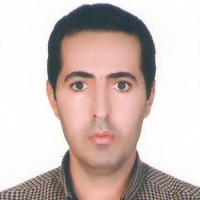Modeling urban structure changes with the spatial planning approach to achieve sustainable urban development - Case Study: Ghaemshahr
Author(s):
Article Type:
Research/Original Article (دارای رتبه معتبر)
Abstract:
Introduction
City has long been regarded as one of the human achievements by civilizations. Urban structure is part of the basic and mainconcepts of urban engineering knowledge and, in fact, is the foundation of its formation, and it is of great importance that some urban planners in developed countries regard it as equal to the spatial planning of the city. Today, lots of driving forces exert pressure on the environment. Change in land use and land cover is one of the pressures caused by driving factors such as population and its increase. The destruction of urban landscape, and change in land use and land cover are cases that constantly pressure the environmentof the country. Land use change is a complex and dynamic process thatinterconnect natural and human systems, therefore it directly relatesto many environmental issues that are globally significant. So, it can be stated that changes in urban structure has always been one of the most important factors, by whichmanhas influenced his environment. Given the role of environment in human life, precise information about the environmental change and the process of their changes should be achieved,which, can determine the extent of the expansion and destruction of resources, and guide these changes in appropriate courses by predicting urban structure changes.
Materials and Methods
In this research, an eight-year period ofthe Google Earth images from Digital Globe, Astrium satellites for the years 2007-2015 was used to model the changes of the urban structure in the study area.These images were then digitized to identify the desired uses. The required preprocessing was carried out by implementing the rules of topology, and the map of user changes for the two periods of 2007 and 2015 was prepared by inserting the images into the ENVE software, and land use was located in 12 educational, religious, park and green spaces, Residential, agricultural, gardens, industrial, sports, tree cover, wasteland and industrial land classes.Then, the transfer force modeling was carried out using the Perceptron of Multi-layer Artificial Neural Networks and 11 variables that include slope, direction, elevation, distance from residential areas, distance from agricultural lands, distance from the gardens, distance from the water zone, distance from the tree cover, distance from barren lands and distance from the road. Then, theassignment of changes to each use was calculated using the Markov Chain, and the modeling for the year 1402 was carried out using the hard prediction and calibration periodmodelofthe years1386to1394.At the end, the urban structureof 1402 was predicted using the Calibration period of 1386 to 1394.
Results and discussion
The results of monitoring the changes showed that agricultural uses (437) and tree cover (9) have decreased, while other uses have increased during two study periods. The reasons for these changes can be largely due to the increase in population and the increase in the needs of the population along with the agricultural not being cost effective, and the roads, wastelands, gardens, educational, religious, water zones, parks and green spaces, industrial, sports and residential uses have had an increasing trend. The results of modeling the transition forceusing artificial neural network showed high accuracy in most of the sub-models. The total error in modeling was obtained for the year 1394, which illustrates the high adaptability of the projected image of the model with the image of the ground reality and the acceptability of the model.The results of modeling for the year 1402 indicatea very high increase in the use of residential (195 hectares) and garden (104 hectares), and a significant reduction of 33 hectares in agricultural use.
Conclusion
In general, it can be stated that the trend of Changes in the urban structure ofGhaemshahr, especially in agricultural and residential sectors is enormous, which leads to the degradation and destruction of the natural environment and the fragmentation of communication corridors that guarantee the balance and sustainability of wild life and the environment. All of these factors are due tothe poor urban and environmental management, including control, supervision and monitoring and the lack of proper planning. The findings of this research call for the necessity of more attention to the sustainable exploitation of the land and preventing its destruction in this city. The results obtained from the prediction of the future also indicate the reliability and validity of the model that is fully consistent with the reality and can be used as an executive model in the future vision planningfor the city ofQaemshahr, and it is possible to prevent damages to the city and its nature through proper urban planning and decision-making of managers.Keywords:
Language:
Persian
Published:
Journal of of Geographical Data (SEPEHR), Volume:27 Issue: 107, 2018
Pages:
209 to 222
magiran.com/p1915833
دانلود و مطالعه متن این مقاله با یکی از روشهای زیر امکان پذیر است:
اشتراک شخصی
با عضویت و پرداخت آنلاین حق اشتراک یکساله به مبلغ 1,390,000ريال میتوانید 70 عنوان مطلب دانلود کنید!
اشتراک سازمانی
به کتابخانه دانشگاه یا محل کار خود پیشنهاد کنید تا اشتراک سازمانی این پایگاه را برای دسترسی نامحدود همه کاربران به متن مطالب تهیه نمایند!
توجه!
- حق عضویت دریافتی صرف حمایت از نشریات عضو و نگهداری، تکمیل و توسعه مگیران میشود.
- پرداخت حق اشتراک و دانلود مقالات اجازه بازنشر آن در سایر رسانههای چاپی و دیجیتال را به کاربر نمیدهد.
In order to view content subscription is required
Personal subscription
Subscribe magiran.com for 70 € euros via PayPal and download 70 articles during a year.
Organization subscription
Please contact us to subscribe your university or library for unlimited access!


